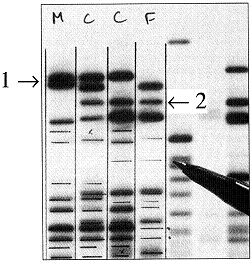Why did the dinosaurs become extinct?
A. The pollen produced by the rise in flowering plants produced allergenic responses in dinosaurs and interfered with their ability to communicate with potential mates.
B. Increasing carbon dioxide levels produced climates too hot for the incubation of their eggs.
C. Cycads and other gymnosperms upon which herbivorous dinosaurs fed declined, and the dinosaurs were unable to digest the angiosperms that arose in their place.
D. A meteorite or comet crashed into the Earth, causing smoke and ash that blocked the sun and caused death of the plants that were food for herbivorous dinosaurs.
E. The changing climate caused the evolution of most dinosaur species into the existing bird, mammal, and reptile species that exist today.
Answer: D
You might also like to view...
A polar covalent bond would be most likely to form between
a. atoms with different electronegativities. b. cations and anions. c. atoms with ?+ and ?? charges. d. atoms with filled valence shells. e. atoms of the same element.
In eukaryotic cells, sequences of mRNA removed before translation are called
introns. anticodons. exons. rRNA. terminators.
The columns in Figure 15-3 represent F (for female), C (for children), and M (for male). The presence of the band marked with arrow #1 shows that:

a. this DNA sequence was inherited by both children from their father.
b. this DNA sequence was inherited by both children from their mother.
c. this DNA sequence was inherited by only one child from the father.
d. this DNA sequence was inherited by only one child from the mother.
e. individual M is not the father of these children.
p21 inhibits cell cycle progression by binding to and inhibiting
a. cyclin-dependent kinases. b. p53. c. ATM. d. Rb protein.